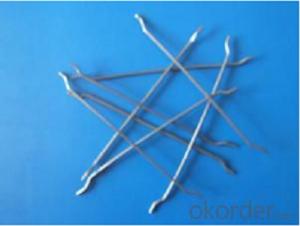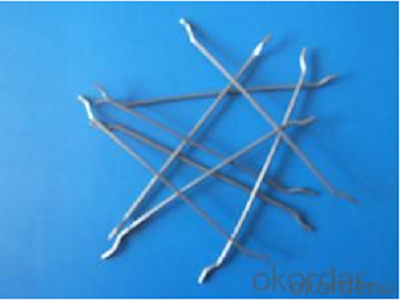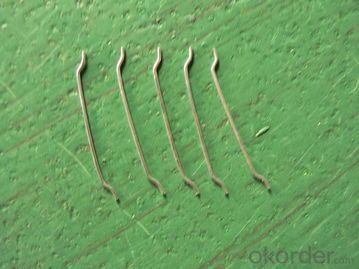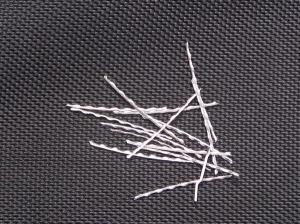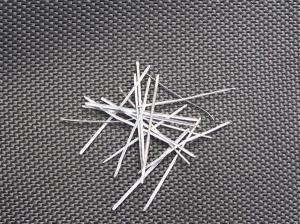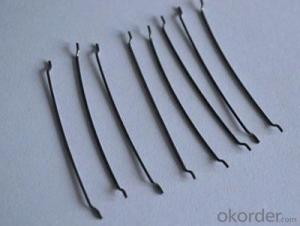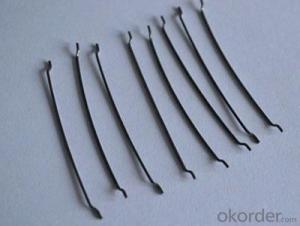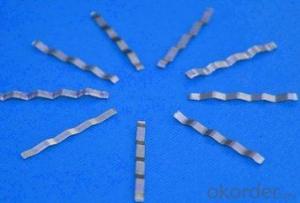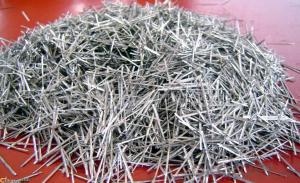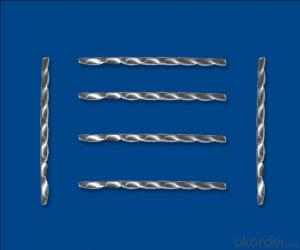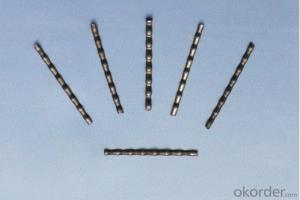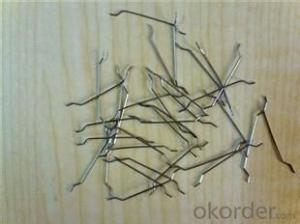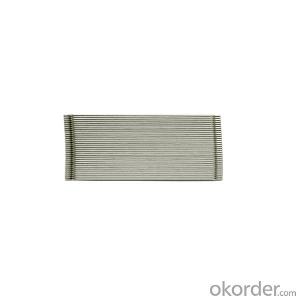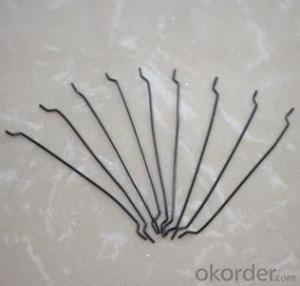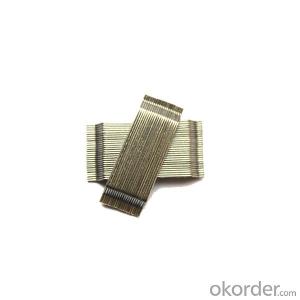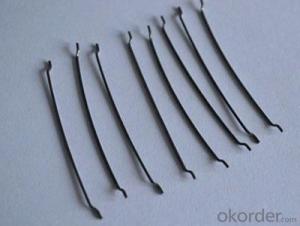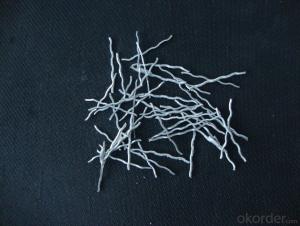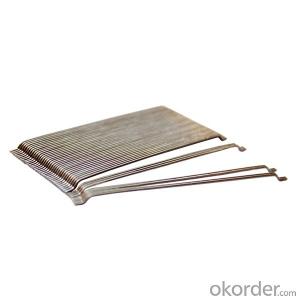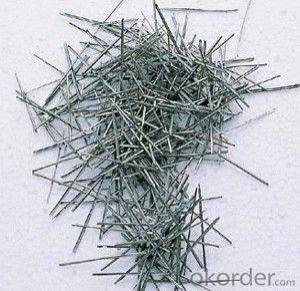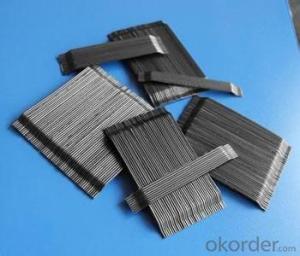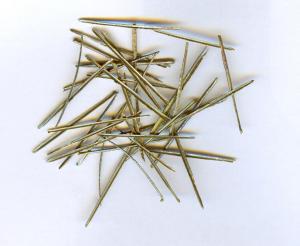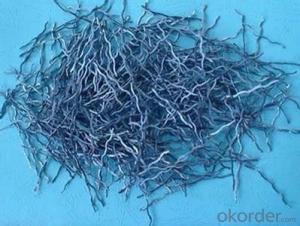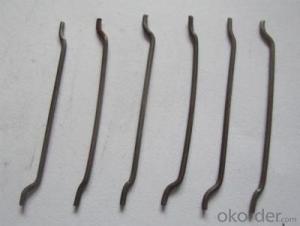Melt Extract Stainless Steel Fiber Reinforced Concrete Steel Fiber 0.9/55 from CNBM China
- Loading Port:
- Tianjin
- Payment Terms:
- TT or LC
- Min Order Qty:
- 1 m.t.
- Supply Capability:
- 5000 m.t./month
OKorder Service Pledge
OKorder Financial Service
You Might Also Like
Quick Details
Place of Origin: Tianjin, China (Mainland)
Model Number: 0.9
Material: Steel
Production Process: Cold drawn
Lengh: 55
Type: 1
Compressive Strength: >1200MPa
Aspect ratio: 61
Standard: ASTM A820M-11
Section Shape: Circular
Application: Concrete Reinforcement
Specifications
| Diameter | 0.90 | mm | 0.04 | in |
| Length | 55.00 | mm | 2.16 | in |
| Aspect Ratio | 61 | |||
| Tensile strength | 1200 MPa | |||
| Type | Cold drawn Steel Fiber | |||
| End | Hooked-end Steel Fiber | |||
| Glued/Loose | Glued Steel Fiber | |||
| Bending Angle | 45°(min.30°) | |||
| Usage & Performance | Floor:Trafficked areas and Industrial floors | |||
| Shotcrete :Slope stabilization and Final lining | ||||
| Precast concrete:Pipe and Railway sleepers | ||||
| Packing | Standard Export Pallet Packing | Bag Packing | 20 kg/Bag,50 bags/Pallet | |
| Bulk Packing | 1,000kg/ Bulk Bag | |||
| Loading Quantity | 20’GP | 20-25 Tonne/Tonnes | ||
| 40’GP | 25-27 Tonne/Tonnes | |||
| 40’HQ | 25-27 Tonne/Tonnes | |||
| MOQ | 1 kg for trial order | |||
| Supply Ability | 10,000 Tonne/Tonnes per Year | |||
| Payment Terms | T/T or L/C at sight | |||
| Delivery Time | Within 15 days after receiving deposit or original L/C at sight | |||
| Certification | ISO9001:2000, CE, | |||
| Product | Diameter | Length mm/in | Aspect Ratio | Type | Packing |
| G-6030 | 0.5 mm (0.0197 in) | 30 mm (1.1811 in) | 60 | Glued | 20 kg/Bag, or 1,000kg/ Bulk Bag |
| G-6535 | 0.55 mm (0.0217 in) | 35 mm (1.3780 in) | 65 | Glued | 20 kg/Bag, or 1,000kg/ Bulk Bag |
| G-6035 | 0.6 mm (0.0236 in) | 35 mm (1.3780 in) | 60 | Glued | 20 kg/Bag, or 1,000kg/ Bulk Bag |
| G-8060 | 0.75 mm (0.0295 in) | 60 mm (2.3622 in) | 80 | Glued | 20 kg/Bag, 50 bags/Pallet |
| G-6060 | 0.9 mm (0.0354 in) | 60 mm (2.3622 in) | 60 | Glued | 20 kg/Bag, 50 bags/Pallet |
| G-6030 | 0.5 mm (0.0197 in) | 30 mm (1.1811 in) | 60 | Loose | 20 kg/Bag, or 1,000kg/ Bulk Bag |
| G-6535 | 0.55 mm (0.0217 in) | 35 mm (1.3780 in) | 65 | Loose | 20 kg/Bag, or 1,000kg/ Bulk Bag |
| G-6035 | 0.6 mm (0.0236 in) | 35 mm (1.3780 in) | 60 | Loose | 20 kg/Bag, or 1,000kg/ Bulk Bag |
| G-8060 | 0.75 mm (0.0295 in) | 60 mm (2.3622 in) | 80 | Loose | 20 kg/Bag, 50 bags/Pallet |
| G-6060 | 0.9 mm (0.0354 in) | 60 mm (2.3622 in) | 60 | Loose | 20 kg/Bag, 50 bags/Pallet |
Picture
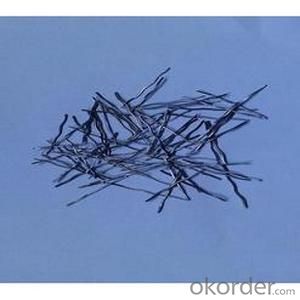
Steel fiber
FAQ
Technical advantages of Daye steel fiber:
A. Improve mechanical performance of concrete
B. Provide uniform distribution throughout concrete with excellent mixing
C. No balling or caking by adopt correct mixing method
D. Reduce concrete volume
E.Save construction time and cost
F.Reduce excavation volume
G.Available for jointless floor.
- Q: Can melt extract stainless steel fiber be used in elevated slabs?
- Yes, melt extract stainless steel fiber can be used in elevated slabs. Melt extract stainless steel fibers are known for their high tensile strength, excellent corrosion resistance, and durability. These properties make them suitable for use in various concrete applications, including elevated slabs. When used in elevated slabs, melt extract stainless steel fibers help enhance the overall strength and performance of the concrete. They provide additional reinforcement and improve crack resistance, which is especially important in structures subjected to high loads and potential cracking, such as elevated slabs. Moreover, melt extract stainless steel fibers can help control shrinkage and reduce the risk of cracking caused by drying shrinkage in elevated slabs. They act as a reinforcement throughout the concrete matrix, limiting crack propagation and minimizing the likelihood of structural damage. Additionally, melt extract stainless steel fibers offer excellent resistance to corrosion, ensuring the long-term durability of the elevated slab. This is particularly important in environments where the slab is exposed to moisture or chemical substances that could potentially corrode the steel reinforcement. Overall, melt extract stainless steel fibers can be a valuable addition to elevated slabs, providing enhanced strength, crack resistance, and durability. However, it is essential to consult with a structural engineer or construction professional to ensure proper dosage and installation techniques for the specific project requirements.
- Q: Is melt extract stainless steel fiber compatible with various types of admixtures?
- Yes, melt extract stainless steel fiber is compatible with various types of admixtures. Stainless steel fibers are known for their versatility and compatibility with different types of concrete admixtures. This compatibility is due to the chemical properties of stainless steel, which make it resistant to corrosion and chemical degradation. When melt extract stainless steel fibers are added to concrete, they provide enhanced mechanical properties such as increased flexural and tensile strength, improved impact resistance, and reduced cracking. These fibers also help to improve the overall durability and longevity of the concrete. In addition, melt extract stainless steel fibers can be used with different types of admixtures, such as superplasticizers, air-entraining agents, and water reducers. These admixtures are commonly used to improve the workability, strength, and durability of concrete. The compatibility of stainless steel fibers with these admixtures allows for the customization and optimization of concrete mixes to meet specific project requirements. Overall, melt extract stainless steel fibers are highly compatible with various types of admixtures and can be successfully incorporated into concrete mixes to enhance their performance and durability.
- Q: What is the effect of melt extract stainless steel fiber on the fire resistance of concrete?
- The use of melt extract stainless steel fiber in concrete significantly enhances its fire resistance. The fiber acts as reinforcement, improving the concrete's structural integrity and preventing cracking or spalling under high temperatures. It also helps to disperse heat more evenly throughout the concrete, reducing the risk of localized hotspots. Additionally, the stainless steel fiber provides a barrier against the penetration of flames and gases, further enhancing the fire resistance of the concrete. Overall, incorporating melt extract stainless steel fiber in concrete greatly improves its ability to withstand and resist fire.
- Q: How does melt extract stainless steel fiber affect the carbonation resistance of concrete?
- The addition of melt extract stainless steel fiber can greatly improve the resistance of concrete to carbonation. Carbonation is a chemical process in which carbon dioxide from the atmosphere reacts with the calcium hydroxide in concrete, forming calcium carbonate. This process can decrease the alkalinity of the concrete, leading to corrosion of embedded reinforcement and a decrease in the overall durability of the structure. When melt extract stainless steel fiber is incorporated into concrete, it forms a three-dimensional reinforcement network, which enhances both the mechanical properties and durability of the concrete. These stainless steel fibers act as a physical barrier, reducing the entry of carbon dioxide into the concrete matrix. This barrier effect slows down the carbonation process, effectively increasing the concrete's resistance to carbonation. Moreover, the stainless steel fibers also improve the mechanical properties of the concrete, making it more resistant to cracking and spalling. This increased resistance to cracking further reduces the potential for carbon dioxide to penetrate the concrete, as cracks serve as pathways for gas diffusion. Additionally, the stainless steel fibers provide an extra layer of corrosion protection to the embedded reinforcement, helping to mitigate the effects of carbonation. The fibers function as sacrificial anodes, redirecting any potential corrosion initiation sites away from the reinforcement and onto themselves. This sacrificial anode effect prolongs the service life of the concrete structure by reducing the risk of reinforcement corrosion caused by carbonation. In conclusion, the melt extract stainless steel fiber has a positive impact on the carbonation resistance of concrete by acting as a physical barrier, enhancing mechanical properties, and providing additional corrosion protection to the embedded reinforcement. These advantages contribute to increased durability and extended service life of concrete structures in environments prone to carbonation.
- Q: Does melt extract stainless steel fiber enhance the flexural toughness of concrete beams?
- Yes, melt extract stainless steel fiber does enhance the flexural toughness of concrete beams. The addition of these fibers improves the resistance of the concrete to cracking, increasing its ability to withstand bending and flexural loads.
- Q: How does melt extract stainless steel fiber improve the fatigue resistance of concrete?
- The unique properties and characteristics of melt extract stainless steel fiber are well-known for enhancing the fatigue resistance of concrete. When added to concrete, these fibers create a reinforcement network that strengthens the material and improves its ability to withstand repetitive loading or cyclic stress. One way in which melt extract stainless steel fiber enhances the fatigue resistance of concrete is by increasing its crack resistance. As cyclic loading occurs, cracks can develop and spread, leading to failure. However, the presence of stainless steel fibers helps to stop the growth of these cracks, preventing them from spreading and improving the overall durability of the concrete. In addition, the high tensile strength and excellent ductility of stainless steel fibers contribute to the fatigue resistance of concrete. These fibers can absorb and distribute stress throughout the concrete matrix, reducing stress concentration. This redistribution of stress helps to prevent the formation of microcracks and enhances the overall fatigue strength of the concrete. Furthermore, the corrosion resistance of stainless steel fibers plays a crucial role in improving the fatigue resistance of concrete. Concrete is often exposed to harsh environmental conditions, such as moisture and chemicals, which can lead to corrosion and deterioration. However, stainless steel fibers are highly resistant to corrosion, ensuring the long-term integrity and durability of the concrete structure. Moreover, melt extract stainless steel fibers also provide thermal stability to concrete. Temperature variations can cause concrete to expand and contract, leading to cracks and reducing fatigue resistance. However, the presence of stainless steel fibers helps to minimize these thermal stresses by providing additional reinforcement and reducing the risk of crack formation. In conclusion, melt extract stainless steel fiber enhances the fatigue resistance of concrete through multiple mechanisms. It improves crack resistance, distributes stress, offers corrosion resistance, and provides thermal stability. By incorporating these fibers into concrete, the material becomes more resilient, durable, and capable of withstanding repetitive loading or cyclic stress, ultimately improving its fatigue resistance.
- Q: Can melt extract stainless steel fiber be used in concrete pipes or culverts?
- Yes, melt extract stainless steel fiber can be used in concrete pipes or culverts.
- Q: Can melt extract stainless steel fiber improve the resistance of concrete to fire?
- Yes, melt extract stainless steel fiber can improve the resistance of concrete to fire. Stainless steel fibers are known for their high melting point, corrosion resistance, and excellent heat conductivity, making them an ideal choice for enhancing the fire resistance of concrete. When added to concrete, these fibers create a three-dimensional reinforcement network that helps to prevent cracks and spalling during fire exposure. The stainless steel fibers also act as a heat sink, absorbing and dissipating heat more efficiently, which can significantly delay the temperature rise in the concrete, thus increasing its fire resistance. Additionally, the fibers enhance the overall strength and durability of the concrete, making it more resilient to fire and prolonging its structural integrity under high temperatures. Therefore, incorporating melt extract stainless steel fiber into concrete can indeed improve its resistance to fire.
- Q: How does melt extract stainless steel fiber impact the shrinkage cracking of concrete pavements?
- Melt extract stainless steel fiber helps reduce shrinkage cracking in concrete pavements by improving the overall tensile strength and ductility of the concrete. The fibers act as reinforcement, dispersing stress and controlling crack propagation, resulting in a more durable and crack-resistant pavement.
- Q: How does melt extract stainless steel fiber affect the workability of self-consolidating concrete?
- Melt extract stainless steel fiber improves the workability of self-consolidating concrete by enhancing its flowability and reducing the risk of segregation. The addition of these fibers helps to distribute the concrete evenly, resulting in a more uniform and cohesive mixture. This, in turn, facilitates easier placement and ensures better consolidation, leading to improved overall workability of the self-consolidating concrete.
Send your message to us
Melt Extract Stainless Steel Fiber Reinforced Concrete Steel Fiber 0.9/55 from CNBM China
- Loading Port:
- Tianjin
- Payment Terms:
- TT or LC
- Min Order Qty:
- 1 m.t.
- Supply Capability:
- 5000 m.t./month
OKorder Service Pledge
OKorder Financial Service
Similar products
Hot products
Hot Searches
Related keywords
